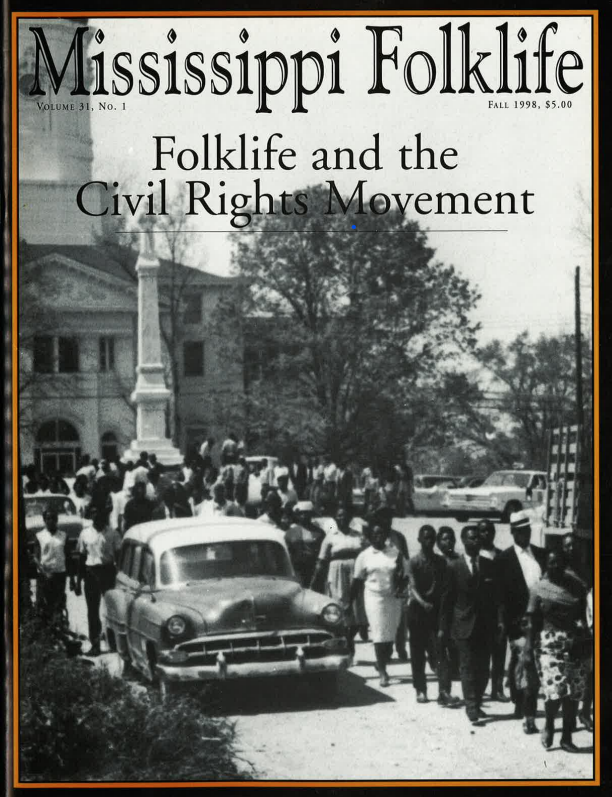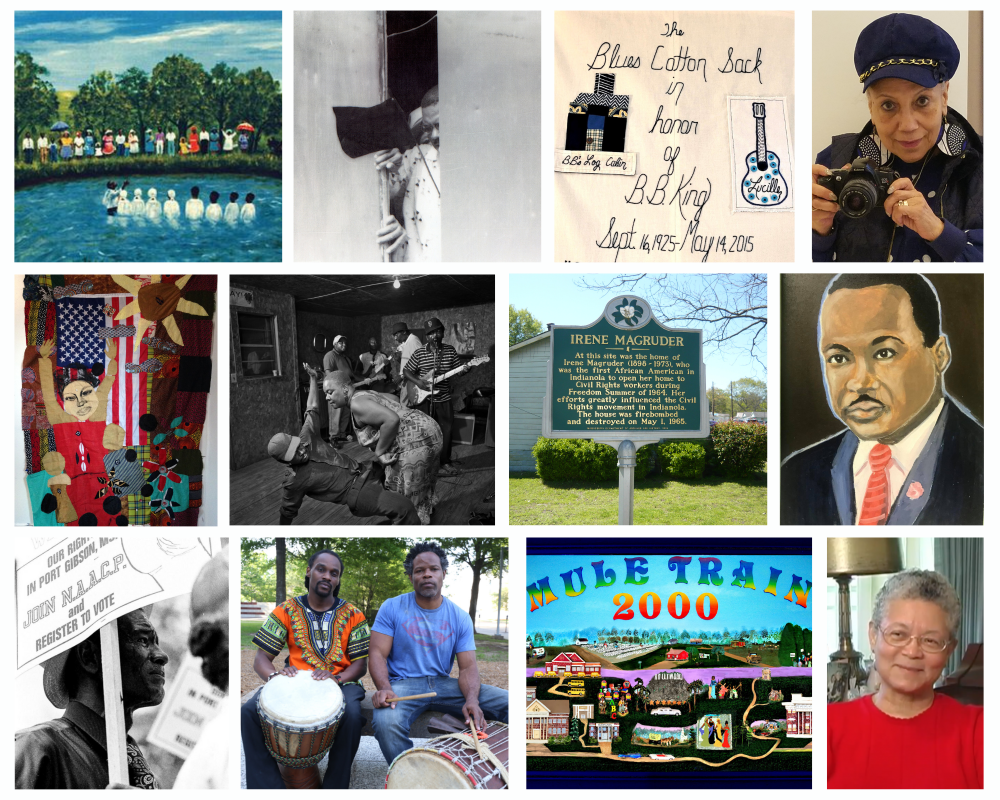We are proud to present our readers with this special essay series, “Folklife and the Civil Rights Movement in Mississippi.” This online series explores the intersection between traditional arts and folklife with the history and legacy of the civil rights movement in the state. In developing this project, we were inspired by the Fall 1998 issue of Mississippi Folklife, when the journal was still a print publication and housed at the Center for the Study of Southern Culture. The 1998 issue entitled, “Folklife and the Civil Rights Movement” included essays about protestways, the Providence Cooperative Farm in Holmes County, and an interview with Worth Long, a folklorist, civil rights activist, and a blues advocate who was instrumental in the organization of the Delta Blues Festival in Greenville, MS. To read the articles from this issue, click here.

In revisiting this theme for our current project, we reached out to our readers, partners and the greater arts community in Mississippi and put out a call for essays centering on folklife topics that engaged with the Civil Rights Movement. We were impressed with the creativity, passion and thoughtfulness of our contributors, whose work explored a variety of folklore subjects such as family lore, the organizing tradition, protestways, folk art, music, quilting and more. The fruits of their labor are expressed in the 12 essays that are featured here.
Through these pieces run a common theme of doing or being in spite of. An artist yet. A community yet. A victory yet. An activist yet. In them, we witness the innate and special human ability to fight, create, thrive, and even celebrate in the face of oppression; in them we see ourselves and imagine our own possibilities.
Through these pieces run a common theme of doing or being in spite of. An artist yet. A community yet. A victory yet. An activist yet. In them, we witness the innate and special human ability to fight, create, thrive, and even celebrate in the face of oppression; in them we see ourselves and imagine our own possibilities.
“An Artist Yet: The Possibility of M.B. Mayfield” is Dr. B. Brian Foster’s delightful exploration of the work and life of M.B. Mayfield, a painter who would be despite the entities that might deny his artistry and humanity. In “Jerry Jenkins on the Djembe, an Instrument for Education and Uplift,” Kumasi McFarland and Maria Zeringue discuss Jerry Jenkins’ use of traditional West African drums to tell stories and to reconnect African Americans to their heritage. Dr. Robert Luckett presents to us the incredible life of Doris Derby, a photographer, teacher, and activist whose broad body of work included documenting the movement in Mississippi with her camera and bringing arts and education to the disenfranchised.
In “Keeping the Civil Rights Movement Alive: Black Spring Break,” Dr. Constance Bailey celebrates the Gulf Coast’s Black Spring Break and goes further to express the importance of black recreation in Civil Rights History. Patty and Dave Crosby bring us an exhilarating photo essay, entitled “Victory Day in Port Gibson,” which documents the origins of Victory Day, a celebration honoring a long-fought and unlikely victory against oppression in Claiborne County. “The Mule Train Collection,” a piece crafted by Betty Crawford and Connie Rudolph, highlights Crawford’s awesome commemoration of the Mule Train through various artistic mediums, most notably a 110’x110’ quilt that iterates the Mule Train’s journey from Marks, Mississippi to Washington D.C.

Dr. Stacy White uses her expansive photo essay, “The Sunflower County, Mississippi Civil Rights Reunions” to detail her family’s experiences during Freedom Summer and the seven reunions that were organized by her and a group of civil rights veterans to reconnect with the brave volunteers. Dr. J. Janice Coleman focuses a lens on the activist side of B.B. King and beautifully describes the quilt she created to bring to light this lesser celebrated aspect of the famous blues musician in “Civil Rights and Civil Wrongs: Reflections on the B. B. King Blues Cotton Sack.” Through text and video, Dr. Wilma Mosley Clopton explores the values and traditions of organizing and activism that are passed down within families in "Generational Courage."
McFarland brings us another piece, this one on Bobby Whalen, the celebrated folk artist and musician whose artwork captures some of the key events and players in the Civil Rights Movement. In ‘Willie King’s “Struggling Blues,”’ Scott Barretta expounds upon the life of Willie King and the evolution of his political voice in his music. Finally, in “Hands Up, Don’t Shoot: Ancestral Quilting for the Future,” Addie Citchens and Maria Zeringue delve into the work of Dail Chambers, a multi-faceted artist whose work not only commemorates the movement but expands it through sustainability and love of the earth.
In closing, it has been a pleasure for us to get to know all of the contributors that we have worked with on this project. Their stories speak to the power and versatility of traditional art and community expression in times of great turmoil. Together, their work demonstrates that art can be many things. Art as an archive. Art as activism. Art as reunion. Art as celebration. Art as healing. Art, in its many forms, is often an integral part of civil rights movements. Sit with these stories to witness 12 different ways that artists, community leaders and everyday people have made a difference in spite of.
Addie Citchens
Maria Zeringue
Editors, “Folklife and the Civil Rights Movement in Mississippi”

